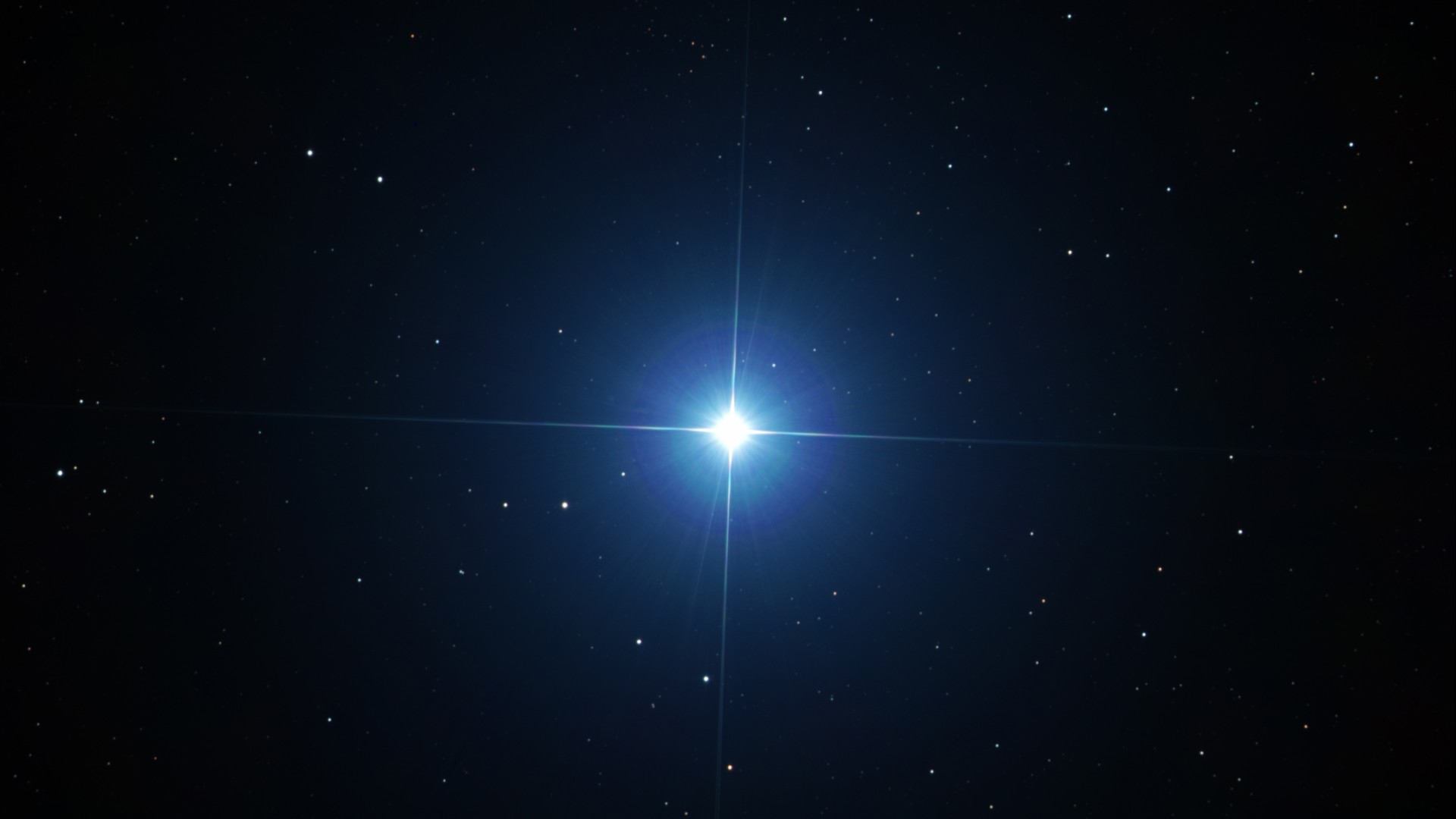Future interstellar comet? Gas-spewing object spotted in asteroid group near Jupiter
Researchers spotted a celestial object strangely outgassing far from the sun — like a comet — during a long road trip through our solar system that could conclude in interstellar space, NASA says.
The object is temporarily circling the sun in a group of ancient asteroids called Trojans, which are trapped by Jupiter's gravity and moving alongside the planet. New images from the Hubble Space Telescope revealed the cosmic interloper in its temporary parking spot, merrily spewing gas into space despite its great distance from the sun.
Simulations suggest the object originated in the icy Kuiper Belt beyond Neptune, and then flew closer to the sun from a "bucket brigade" of comets kicked in to a region between Jupiter and Neptune. The object, called a "Centaur", will only stay by Jupiter for a couple of years before the planet punts it out of the Trojan zone and forces the outgassing object towards the sun, for further adventures.
Video: Comet with 400,000-mile tail captured near Jupiter's Trojan asteroids
Related: 'Oumuamua and Borisov are just the beginning of an interstellar object bonanza

It was new observations from Hubble that revealed the shroud of gas and dust, confirming earlier suspicions of this activity spotted with NASA's Spitzer Space Telescope days before Spitzer's retirement in early 2020.
"Only Hubble could detect active comet-like features this far away at such high detail, and the images clearly show these features," lead Hubble researcher Bryce Bolin, of the California Institute of Technology, said in a NASA statement. Bolin noted that the tail of the Centaur is roughly 400,000 miles (640,000 kilometers) in length, which is a little less than twice the average distance between Earth and our moon.
The outgassing so far away from the sun puzzles researchers, since water ice only barely starts to sublimate in Jupiter's neighborhood — that's roughly 465 million miles (750 million km) away from the sun. A typical water-ice comet only outgasses in earnest at 200 million miles (320 million km) away, so the tail may not be indicative of water. Spitzer's observations instead suggested the presence of carbon monoxide and carbon dioxide gases, which don't need as much heat as water to start sublimating.
Get the Space.com Newsletter
Breaking space news, the latest updates on rocket launches, skywatching events and more!
Related: A first-of-its-kind asteroid thrilled astronomers. But it was just a comet fraud.
Bolin said even though this is the first Centaur spotted in a Trojan group, this might be a normal pit stop for objects slinging from the outer solar system to the inner solar system, where Earth and the other rocky planets reside. That said, figuring out the comet's origin story and future was a complicated tale.
Computer simulations from the team suggest the object, more formally known as P/2019 LD2, flew close to Jupiter about two years ago. Jupiter then did what Jupiter often does to small objects, which was slingshot it in a new direction; in this case, the object landed in the Trojan asteroid group leading Jupiter in its orbit by about 437 million miles (703 million km).
Numerous telescopes caught P/2019 LD2 at various stages in its journey. The first to spot it in June 2019 was the University of Hawaii's Asteroid Terrestrial-impact Last Alert System (ATLAS) telescope system in Hawaii, and the comet activity was spotted by Japanese amateur astronomer Seiichi Yoshida.
Related: Comet ATLAS disintegrates into pieces as Hubble telescope watches
The study team found archival images of the object from a wide-field survey at California's Palomar Observatory, called the Zwicky Transient Facility, dating to April 2019. They did more research using the Apache Point Observatory in New Mexico, and then the Spitzer Space Telescope in January 2020. Hubble, however, was the first to show the comet's tail, the structure of the coma, the size of the dust particles, and the ejection velocity of the particles.
Studying P/2019 LD2 could also give more detail as to how the so-called "bucket brigade" of comets work. Researchers believe these comets come from the Kuiper Belt and bounce between planets while moving ever-closer towards the sun, warming up along the way. Given the number of comets that pass by Earth, a short-period comet is delivered to Earth's neighborhood from the Kuiper Belt every 100 years or so, simulations suggest.
Once the object circles around the sun, simulations suggest a 90% chance that the gravity of Jupiter — the largest planet in the solar system — will scoop P/2019 LD2 back up sometime in the next 500,000 years. Then the planet may kick the object out of the solar system for good, sending P/2019 LD2 on a one-way trip into interstellar space. Of course, that scenario assumes the comet manages to avoid smacking into the sun or some other planet during its journey, or simply disintegrating from the heat of the sun.
A paper based on the research appeared Feb. 11 in The Astronomical Journal.
Follow Elizabeth Howell on Twitter @howellspace. Follow us on Twitter @Spacedotcom and on Facebook.
Join our Space Forums to keep talking space on the latest missions, night sky and more! And if you have a news tip, correction or comment, let us know at: community@space.com.

Elizabeth Howell (she/her), Ph.D., was a staff writer in the spaceflight channel between 2022 and 2024 specializing in Canadian space news. She was contributing writer for Space.com for 10 years from 2012 to 2024. Elizabeth's reporting includes multiple exclusives with the White House, leading world coverage about a lost-and-found space tomato on the International Space Station, witnessing five human spaceflight launches on two continents, flying parabolic, working inside a spacesuit, and participating in a simulated Mars mission. Her latest book, "Why Am I Taller?" (ECW Press, 2022) is co-written with astronaut Dave Williams.









